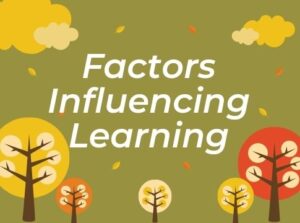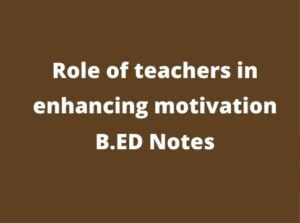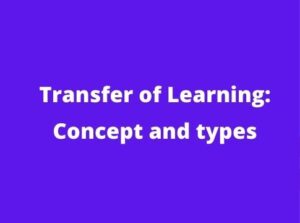Microteaching skills is a technique used in teacher training that gives the opportunity for teachers to review their own performance and receive feedback on their ability and development skills as a teacher.
There are four micro-teaching skills these are-
- The skill of probing Questioning
- Skill of Reinforcement
- Skill of Stimulus variation
- Skill of Explaining
- Skill of Illustrating with Examples
Micro Teaching Skills
1. Skill of Probing Questioning
These micro Teaching skills include probing into the pupil’s response by asking a number of questions about what they already know and leading them to correct responses or to remove any ambiguity or hindrance in their understanding which has led to such responses. Thus this skill involves going deep into a pupil’s response by asking a series of subsequent questions.
Components of skills
- Prompting technique: This involves the teacher giving cues or hints to the pupil and asking leading questions. This technique allows the teacher to probe by prompting the pupil, even though a first instance it appears that the pupil cannot answer this question
- Seeking further information techniques: If the initial response of the pupil is either incomplete or partially correct then the teacher helps the pupil to clarify, elaborate or explain his initial response. Here the teacher elicits more mot information and meaning or seeks further clarification from the pupil by asking questions.
- Refocusing technique: This technique is generally used when the pupil gives a correct response. The teacher refocuses class attention to a related issue or a topic already covered in the class, The pupil views his response in relation to other similar situations.
- Redirection technique: This involves putting or directing the same question to several pupils for a response. This is generally done for the purpose and for increasing pupil participation.
- Increasing critical awareness technique: This involves asking ‘how’ and ‘why’ of of a completely correct or expected response, for the purpose of seeking increased critical awareness in the pupil. The technique elicits a rationale for the pupil’s initial response.
2. Skill of Reinforcement
This skill involves the teacher using more and more positive reinforces and decreasing the use of negative reinforcers so that the pupil’s participation in the class is maximized.
Components of skills
- Positive verbal reinforcement: This Micro Teaching skills include reinforcement through various verbal expressions in the form of teacher statements to communicate to the pupil’s teacher’s acceptance of students’ ideas, and feeling or making encouraging remarks like ‘good’, ‘right’, ‘yes’, ‘carry on’. etc. or using extra verbal cues or expressions like ‘hmm-hmm’, ul-uh’, ctc.
- Positive non-verbal reinforcement: It includes non-verbal expressions like nodding of the head, smiling, moving towards the responding pupil, or any other non-verbal (without words) action indicating pleasure at the pupil’s response.
- Extra verbal cues: Expressions like ‘carry on’, continue, hum’, ‘yes’, etc. which give encouragement to a complete or partly correct answer, is known as extraverbal cues.
- Repeating & rephrasing: Generally a teacher repeats a correct answer or writes it on the Black Board. If the answer is partially correct the teacher rephrases it.
- Writing pupil answer: In some cases, the student’s answer is written on the Blackboard by the teacher for the benefit of the class.
3. Skill of Stimulus variation.
The skill of stimulus variation (Micro Teaching Skills) can be defined as a deliberate change in the attention-drawing behaviours of the teacher in order to secure and sustain the pupil’s s attention toward the lesson at a high level
Components of the skill: –
- Movements: This includes movement from one place to another to encourage useful shifts for attention For example, the teacher moves towards the board to write something on it, moves towards the back to see what the students are doing, and moves from the table to remove boredom.
- Gesturer: Gestures include head, hand, and body movements to draw pupils’ attention, to emphasize the importance, to express emotion, or indicate the shape, size or movements, etc.
- Change in speech pattern: It includes a sudden or radical change in tone, volume or speed of the teacher’s speech for drawing the attention of the pupils.
- Focusing. This includes: –
- Verbal focusing like ‘listen carefully to this’, ‘look at this diagram’ etc. to focus pupils’ attention to a particular point.
- Gestural focusing like using gestures (head, hand and body movement) to focus Pupil attention to a particular point in the lesson
- Verbal and gestural focusing includes simultaneous use of verbal and gestural focusing which can be done by pointing to a figure and saying verbally ‘look at this figure
- Change in interaction style: This include three styles of interaction among pupils and teacher (a) Teacher-pupil or (b) teacher group interaction (c) pupil-pupil interaction
- Pausing: Pausing includes short deliberate intervals of silence used while conveying information or explaining in order to sustain pupils’ attention.
- Oral-Visual switching: This includes change in the medium-oral, visual or oral-visual through which information is conveyed to pupils.
4. Skill of Explaining
Generally, a teacher is said to explain when he is describing “how why and sometimes ‘what’ of a concept, phenomenon, event, action or condition
Components of the skill:
Desirable behaviors:
The skill of explaining involves increasing desirable behaviors mentioned below:
- Explaining link: This involves using linking words and phrases in the statements or an explanation clearer by bringing continuity in the statements used and they give a clue to what the teacher is explaining. They are generally conjunctions and prepositions which explicitly indicate the cause, consequences, time sequence, means or purpose of an event, concept, action or condition.
- Beginning statement(s): Beginning statements are the introductory statements made before an explanation for operating mental readiness on the part of pupils to listen to what is going to be explained.
- Concluding statements: Concluding statements are statements summarizing the main points in the explanation, stated after the explanation ends.
- Questions to test pupils’ understanding: This involves putting questions to pupils to test whether or not they have understood what has been explained.
5. Skills of Illustrating with Examples
The skill of illustrating with samples involves describing an idea, concept or principle by using various types of examples.
Components
- Formulating simple examples: Simple example is one that is related to the previous knowledge of pupils which can be judged from their participation.
- Formulating examples relevant to the rule or concept: An example is said to be relevant to a rule or concept when the rule or concept can be applied to it.
- Formulating interesting examples: An example is said to be interesting if it can arouse curiosity and interest in pupils and this can be judged by observing the attending behavior of pupils
- Using appropriate media for example appropriateness of media refers to its suitability to age level, grade level, maturity level and to the unit taught. It can be (a) verbal (b) nonverbal.
- Using examples by inducto deductive approach: This involves the teacher eliciting examples relate to the concept or rule to clarify it, pupils’ stating the concept or rule and the teacher’s seeking examples from pupils for verifying their understanding.
Conclusion: Micro Teaching Skills are generally used to review the teacher’s own performance and how much students learn from your teaching they will give you feedback. Micro Teaching Skills are very useful to explain Small topics within a short period of time. It is very useful from a teaching-learning point of view.



